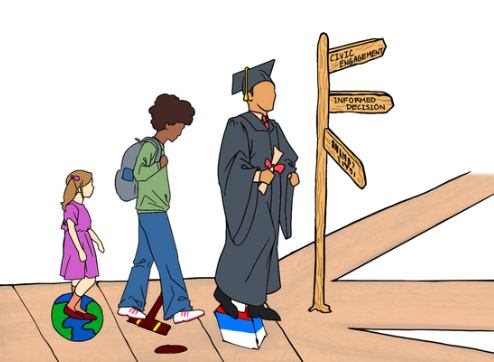Written by Lisa Hao
Published in the September 11, 2015 issue
After a strenuous school year, the Creative Scheduling Committee came out with a new schedule designed to minimize academic stress. Some changes include increased class time, two tutorial periods and allotted time for teacher collaboration. Although change is difficult to embrace, integration of the new block schedule has been smoother than anticipated. The schedule enables students to focus on actual learning rather than the completion of work through longer class periods, mandatory Flex Time and increased time for homework.
Many students were initially wary of the block schedules because 75 to 80 minute periods sounded lengthy. However, the extra 15 to 20 minutes prove to be crucial in allowing time for tough questions and extended discussions. Teachers do not have to tell students to stay past the bell as often as they used to since now they have enough time for the entire lesson.
The required Tuesday tutorial ensures that students understand material through increased opportunities to ask for help from teachers. During previous years, many upperclassmen would not attend tutorial since it was both optional and held after G period, during which many students had a prep. Although they might have had questions, there was not enough appeal for students to come back to school. With the schedule change, students can ask clarifying questions and get help with
difficult assignments since all students are required to stay for the tutorial.
Flex Time doubles as both a period for tutorial and Social Emotional Learning (SEL). The newly implemented SEL will teach students valuable skills about how to stay mentally healthy. Ideally, students will learn how to manage stress and live a balanced life. This program will hopefully help students enjoy their classes more and learn for the knowledge rather than for the GPA.
Also, fewer class meetings mean that students can choose what activities to prioritize. Instead of trying to balance friends, extracurriculars and six classes worth of homework every day, students only have four or five classes to worry about. Depending on its rigor, one fewer class can free up 45 minutes to an hour. Those extra minutes could be used for pursuing non-scholarly interests, exploring subjects further or even catching up on sleep. Instead of rushing to complete assignments, students can take more time on each individual assignment to ensure that they fully understand the material.
In addition, classes only meet thrice per week, as opposed to the previous four times. The reduction in number of meetings gives students more time to complete projects and manage other responsibilities. Instead of having to do most of their work the day it is assigned, students can choose which subjects to focus on and space out their workload. With the additional freedom, students can learn how to effectively manage time and fit assignments around their other activities.
Though the irregularity of end times makes the schedule difficult to adjust to, the benefits far outweigh the drawbacks. The block schedule brings the emphasis back to achieving knowledge rather than obtaining good grades. Through this schedule, Creative Scheduling Committee achieved their goal to reduce student stress.









